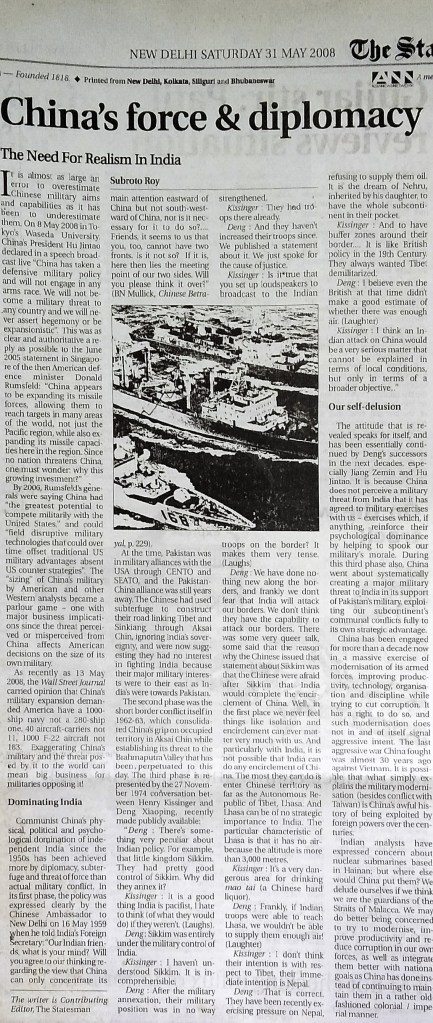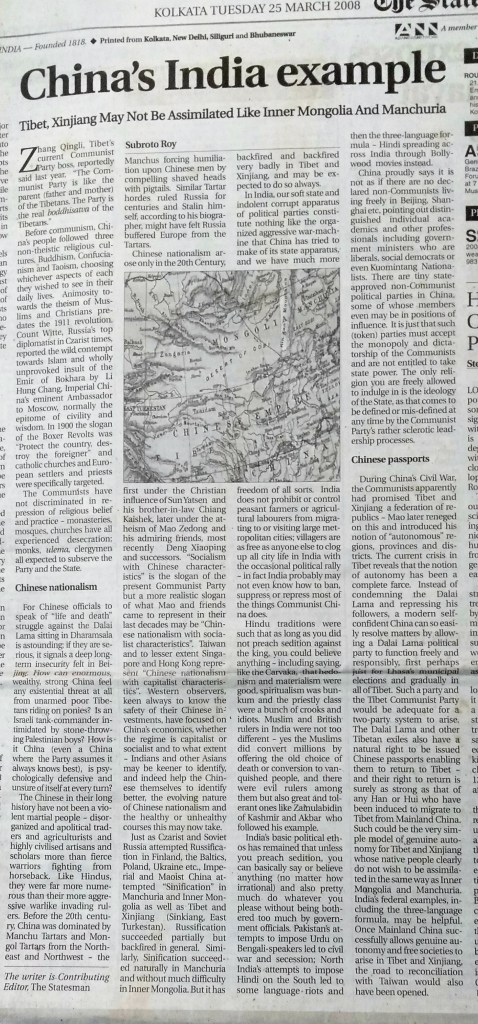
I have had a close interest in China ever since the “Peking Spring” more than thirty years ago (if not from when I gave all my saved pocket money to Nehru in 1962 to fight the Chinese aggression) but I had not published anything relating to China until 2007-2008 when I published the ten articles listed below:
“Understanding China”, The Statesman Oct 22 2007
“India-US interests: Elements of a serious Indian foreign policy”, The Statesman Oct 30 2007
“China’s India Aggression”, The Statesman, Nov 5 2007,
“Surrender or Fight? War is not a cricket match or Bollywood movie. Can India fight China if it must? “ The Statesman, Dec 4 2007
“China’s Commonwealth: Freedom is the Road to Resolving Taiwan, Tibet, Sinkiang” The Statesman, December 17, 2007
“Nixon & Mao vs India: How American foreign policy did a U-turn about Communist China’s India aggression”. The Statesman, January 7 2008.
“Lessons from the 1962 War: there are distinct Tibetan, Chinese and Indian points of view that need to be mutually comprehended,” The Statesman, January 15, 2008
“China’s India Example: Tibet, Xinjiang May Not Be Assimilated Like Inner Mongolia, Manchuria”, The Statesman, March 25, 2008
“China’s force and diplomacy: The need for realism in India”, The Statesman, May 31, 2008
“Transparency and history” (with Claude Arpi), Business Standard, Dec 31 2008
With new tensions on the Tibet-India border apparently being caused by the Chinese military, these may be helpful for India to determine a Plan B, or even a Plan A, in its dealings with Communist China.
See also https://independentindian.com/1990/09/18/my-meeting-jawaharlal-nehru-2/
https://independentindian.com/2009/11/25/on-the-zenith-and-nadir-of-us-india-relations/




